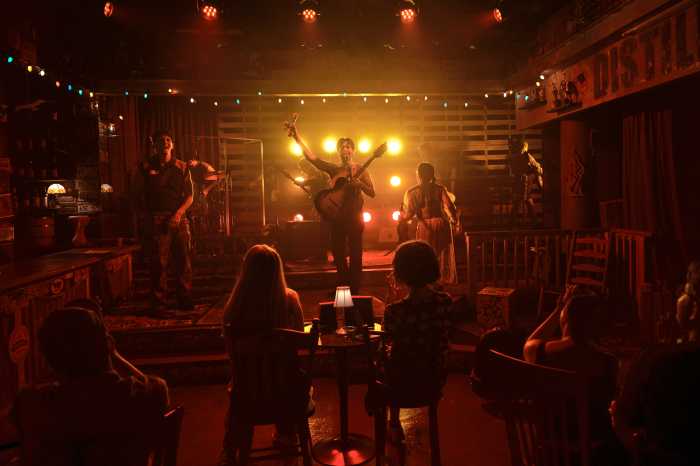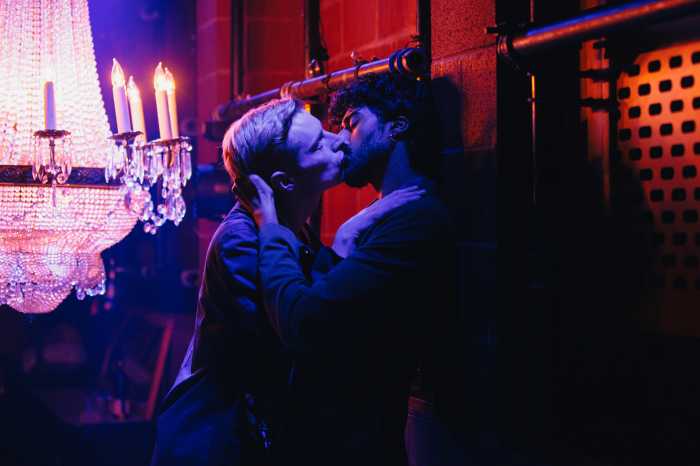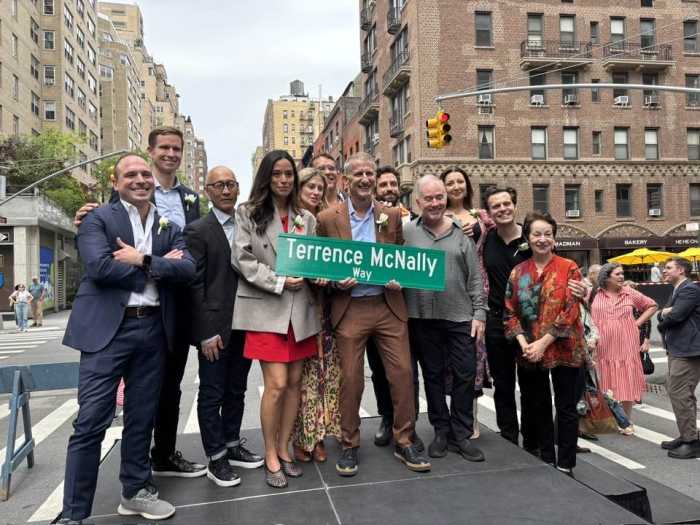The impertinent but important dances of Larry Keigwin.
By: BRIAN MCCORMICK | Without a doubt, the Joyce Theater debut of Keigwin + Company on July 28 was a rousing success. Drawing from works commissioned by and created at different dance festivals around the country, the five-year old company presented a program entitled “Elements,” comprised of “Water,” “Fire,” “Earth,” “Air,” and “Wind” to an enthusiastic full house.
Larry Keigwin choreographs for short attention spans. Each dance is divided into four sections, each section assigned one piece of music or song – often alternating classical and pop – with each song separated by a blackout. Strong on composition, they are short on ideas; it's fluffy, inexorably white stuff, fortified with spoonfuls of burlesque titillation, lots of setting up for predictable thematic punch lines, and dancers constantly smiling at each other.
It's jejune, but hey, this is America. The affable Keigwin and his likable performers — Nicole Wolcott, Liz Riga, Ying-Ying Shiau, Ashley Browne, Alexander Gish, Andrew Cook, Ryoji Sasamoto, and Samuel Roberts – have attracted new audiences to live dance through their lighthearted, carefree arts and crafts. There are no worries about “not getting it” with this kind of good-looking, nicely packaged entertainment.
In “Water,” the handsome ensemble, wrapped in white towels, take turns being cheeky as they shower in bottled water, while two accomplices hold up their unfurled attire in front of them to prevent the audience from seeing too much. Of course, a flash of ass is inevitable, courtesy of the choreographer, who dances with his company and blends well.
Mozart, Cole Porter, and Marcelo Cortes Galvan provide the music for this cavorting school of fish and their recurring hand-flapping motif. The bearded Gish, with his head wrapped in a towel and superstar bitch attitude, plays it for gay laughs in the third section, “Spa,” against the straight Riga. She repeatedly enters and exits, carrying him water, which he drinks, spits, showers in, and pours out in a fake Naomi-esque fit. Later, when the other men reenter wearing dress socks and shoes along with their towels, Gish clops around in a pair of strappy heels instead.
Liz Prince's Day-Glo firebird costumes for “Fire” in yellow, orange, and red, along with sequined bathing caps and streaming arm accoutrements, jolt the senses as Browne, Wolcott, and hot new addition Sasamoto undulate and flutter to Handel and Chopin.
Associate artistic director Wolcott, who is a powerhouse performer, only has a short solo to Patsy Cline's “Crazy,” which begins with a frantic dash into an uncooperative spotlight; but it's a burning several minutes, with staccato hand gestures collapsing toward her expressive face, cutting into an explosion of total wild movement that just as quickly dies away. The piece concludes with a loud expression of urban music and movement that made the costumes seem less outrageous.
For “Earth,” the dancers got down on all fours and scrambled across a swath of Astroturf, evoking the titles of each section — “Gecko” “Chameleon,” “Dragon,” and ending with “Iguana” — danced with high energy to the song “Whip It” by the '80s band Devo. Here, Prince's costumes of mixed plaid patterns with Elizabethan collars suggested a kind of Scottish camouflage.
“Air,” commissioned by the American Dance Festival, lavishes on the embattled meme of “the friendly skies,” with the performers dressed as flight attendants and captain, arms out to the side, swooping about the stage, and rolling their carry-on cases to the strains of “Up, Up, and Away.” This could be a JetBlue commercial.
The program ended with “Wind,” the most rigorous work of the evening, danced by the full company to music by Philip Glass with Ravi Shankar.
Keigwin + Company may be impertinent, but they are also important. You can't fault artists for what they don't do; it's the job of the critic to observe, analyze, interpret, and evaluate what an artist has created, not what they didn't. Larry Keigwin and his charming ensemble make live dance accessible to a general public. They provide both a mirror and a doorway from the processed dance of TV to the more artistic choreographic imagination of concert performance. That's a good thing for dance – maybe not the exclusionary dance about dance that puts regular people off to dance, but dance itself, the way God and Isadora Duncan intended it.

































